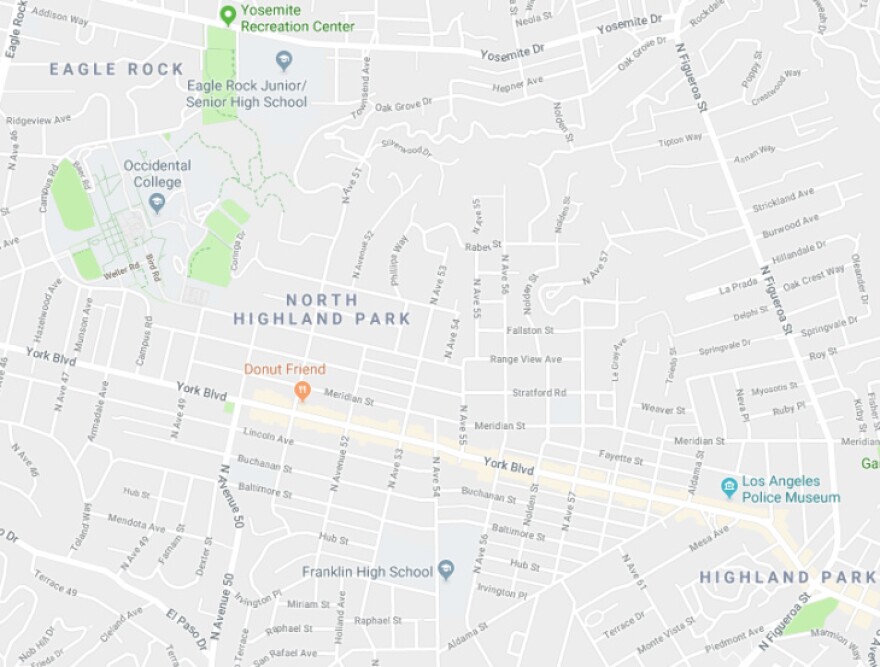Truth matters. Community matters. Your support makes both possible. LAist is one of the few places where news remains independent and free from political and corporate influence. Stand up for truth and for LAist. Make your tax-deductible donation now.
Google Created LA Neighborhoods That Don't Exist, Then Deleted Them. What Gives?

It was peculiar. Looking at Google's map of Los Angeles, three words stood out. Nestled between the historic neighborhoods of Eagle Rock and Highland Park was another designation: "North Highland Park."
When asked, everyday Angelenos and city officials said the same thing: Never heard of it.
"It's Highland Park to us and the community ... we deal with every day," said Rick Coca, a spokesman for City Councilman José Huizar, who represents L.A.'s District 14.
The office of Councilman Gil Cedillo, whose District 1 shares a border with Huizar's, confirmed the city "(doesn't) have an official designation for North Highland Park."
Scrolling west led to another puzzler. Above the label for the L.A. community of Silver Lake, just east of the reservoir, was a neighborhood dubbed "Silver Lake Heights."

But that's not a real place either, according to the office of District 13's Councilman Mitch O'Farrell. So why were these fake neighborhoods showing up in Google Maps?
The short answer: they existed because Google said they did. But, again, they actually don't. And now they've been erased from the map -- a few days after we asked Google about them.
So, how exactly does Google get the data to decide what to call certain neighborhoods? We asked them about that, but the behemoth company is infamous for its extreme secrecy and lack of public information about how they do much of anything.
But in a recent New York Times report on Google's mapmaking (which also mentions "Silver Lake Heights"), a company spokeswoman said the tech giant creates its maps using information from third-party data, public sources, satellites and Google users. The Times article went on to explain that property listings for fictional, nice-sounding neighborhoods made up by local realtors might be catching Google's eye.
Asked why the former "Silver Lake Heights" and "North Highland Park" neighborhoods were wiped from the Los Angeles-area map, Google did not respond.
The fictitious labels might be strange and inaccurate, but do Angelenos actually care where Google says they live or work? City officials weren't aware of the faux digital destinations until we asked about them.
"It's inconsequential to us," Huizar's spokesman Coca said. "Communities and neighborhoods are defined over the years by the people who live there, not a device that might help you get from Point A to Point B."
RELATED: Check Out This Amazing Map That Features Every L.A. Neighborhood
News happens every day. Here at LAist, our goal is to cover the stories that matter to you and the community you live in. Now that we're part of KPCC, those stories (including this one you're on right now!) are made possible by generous people like you. Independent, local journalism isn't cheap, but with your support we can keep delivering it. Donate now.







